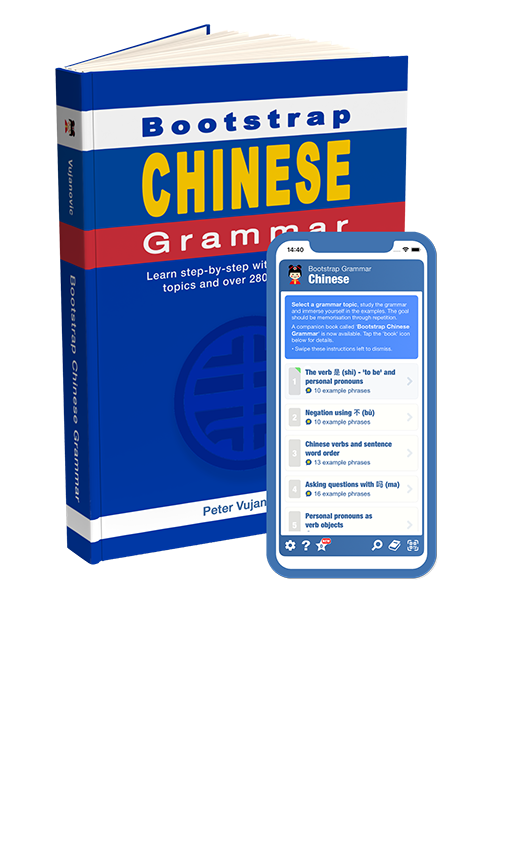Chinese grammar - Plurals and the plural marker 些 (xiē) |
|||
|
|||
Chinese does not typically mark nouns for number. So the same form of a noun is used regardless of whether it refers to one or multiple items. That said, in many instances there are plural forms. One such case is the demonstrative pronouns 这 (zhè) and 那 (). The plural marker 些 (xiē) is used with 这 () and 那 () to refer to plurals of 'this' and 'that' forming 'these' and 'those'. • 这些 () means 'these (things)' close to the speaker. • 那些 () means 'those (things)' further from the speaker. |
| Examples: | |
|
这些是苹果。
zhè xiē shì píngguǒ. These are apples.
|
|
|
那些是桌子。
nà xiē shì zhuōzi. Those are tables.
|
|
|
这些不是椅子。
zhè xiē bú shì yǐzi. These are not chairs.
|
|
|
这些是橙子吗?
zhè xiē shì chéngzi ma? Are these oranges?
|
|
|
那些不是柠檬吗?
nà xiē bú shì níngméng ma? Aren't those lemons?
|
|
|
这些是什么?
zhè xiē shì shénme? What are these (things)?
|
|
|
那些是什么?
nà xiē shì shénme? What are those (things)? |
|
|
那些是山吗?
nà xiē shì shān ma? Are those mountains? |
|
|
那些是山。
nà xiē shì shān. Those are mountains. |
|
 |
|


 Note
Note 
